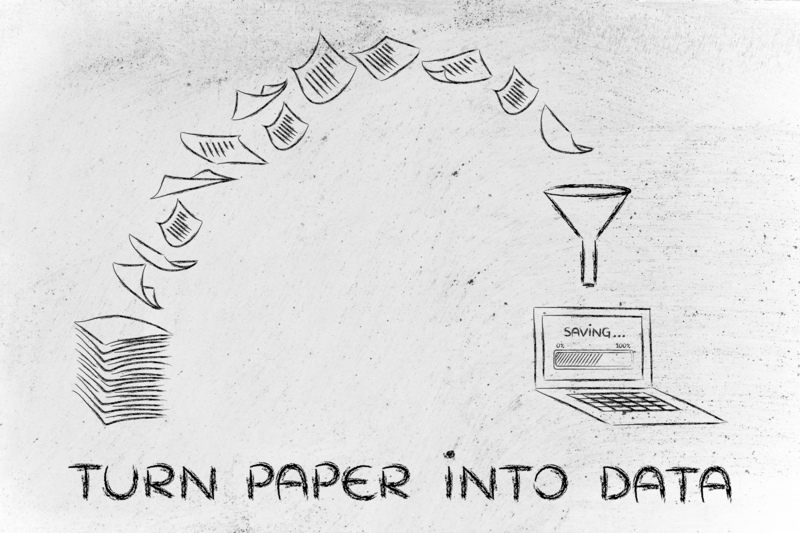The Do's and Don'ts of PPE Waste Disposal
Personal Protective Equipment (PPE) has become a crucial part of our daily lives, especially in workplaces, hospitals, and public spaces. With its increased usage, the proper disposal of PPE waste has emerged as a significant environmental and health concern. Mismanagement can lead to pollution, the spread of diseases, and harm to sanitation workers. This comprehensive guide explores the do's and don'ts of PPE waste disposal, helping individuals, businesses, and communities handle PPE waste responsibly.
Understanding PPE Waste: What Does It Include?
Before diving into the best practices, it's important to understand what constitutes PPE waste. The term refers to used items that are designed to protect individuals from hazards or infections, including:
- Disposable face masks (surgical, N95, etc.)
- Gloves (latex, nitrile, vinyl)
- Face shields and goggles
- Gowns and aprons
- Protective shoe covers
Most of these items are meant for single use and can be contaminated with pathogens or chemicals. Understanding the nature of PPE waste is the first step toward its correct disposal.

Why Proper PPE Waste Disposal Matters
Improper disposal of PPE waste can lead to a myriad of problems, including:
- Disease Transmission: Used PPE can carry pathogens, risking the health of anyone who comes into contact with it during waste collection, transportation, or processing.
- Environmental Pollution: PPE waste, particularly plastic-based items, contributes to landfill clutter and can pollute water bodies, harming wildlife.
- Community Safety: Littered masks and gloves in public places degrade community hygiene and can scare or endanger the public.
Therefore, adhering to PPE waste disposal best practices is essential to protect public health and the environment.
Do's of Proper PPE Waste Disposal
1. Segregate PPE Waste from Regular Trash
Always separate PPE waste from household or office trash. Use dedicated bins or bags labeled for PPE waste disposal. This prevents cross-contamination and ensures that PPE waste undergoes specialized handling.
2. Use Appropriate Containers and Bags
Collect PPE items in sturdy, leak-proof bags or bins with lids. Ideally, use color-coded bags (such as red or yellow) commonly associated with biohazardous waste, which can alert sanitation workers to handle with caution.
3. Seal Waste Properly Before Disposal
Make sure to tie or seal the bags securely to avoid accidentally releasing contaminated PPE onto streets or garbage trucks. Double-bagging can provide extra safety if the initial bag is compromised.
4. Follow Local PPE Waste Disposal Guidelines
Check with your local waste management authority for specific PPE waste disposal systems. Some communities have exclusive collection points or scheduled pickups for hazardous waste.
- Hospitals and clinics should adhere strictly to medical waste disposal regulations.
- Businesses may need to contract licensed hazardous waste handlers.
5. Sanitize Hands After Handling PPE Waste
Always wash your hands thoroughly with soap and water or use a hand sanitizer after handling or disposing of PPE, even if you use gloves. This simple step can minimize risk of infection.
6. Educate Employees and the Community
Awareness is key. Regularly inform employees, students, or residents about the correct process of PPE waste disposal through notices, signs, or training sessions.
7. Consider Environmentally Friendly Alternatives
Whenever possible, choose reusable or biodegradable PPE, properly sanitized after each use, to minimize environmental impact. Some companies also offer recycling programs for specific types of PPE.
Don'ts of PPE Waste Disposal
1. Don't Litter Used PPE in Public Places
Throwing used masks, gloves, or face shields in the streets, parks, or parking lots is unsafe and unsightly. It increases the risk of contagious spread, pollutes the environment, and endangers animals and sanitation workers.
2. Don't Mix PPE Waste With Recyclables
PPE should never be placed in recycling bins. Most PPE is not recyclable due to contamination concerns and incompatible materials, and it can disrupt recycling facilities by exposing workers to biohazards.
3. Don't Leave Used PPE Unsecured
Never leave used PPE items on desks, counters, or shared spaces where others may inadvertently touch them. Always dispose of them quickly and securely.
4. Don't Burn PPE Waste on Your Own
Open burning of PPE can release toxic fumes, including dioxins and furans, which are hazardous to health and the environment. Leave incineration to professional waste management facilities.
5. Don't Reuse Single-Use PPE
Disposable PPE items, such as masks and gloves, lose their protective capability after one use. Reusing them increases risk of contamination and infection.
Safe PPE Waste Disposal Practices for Different Settings
Healthcare Facilities
- Follow stringent biohazard waste management protocols.
- Dispose of PPE in marked, hands-free containers.
- Apply immediate containment of used PPE in restricted zones.
- Work with certified medical waste disposal companies for safe treatment and disposal.
Workplaces and Offices
- Provide separate bins for PPE waste at entrance/exit points and in high-traffic areas.
- Empty bins regularly to avoid overflow and exposure.
- Educate cleaning staff on proper PPE waste handling procedures.
Households
- Designate a specific bin or bag for used PPE.
- Minimize direct handling of the waste; use gloves if possible.
- Seal bags before placing them in your outdoor trash bin.
- Check community guidelines for scheduled hazardous waste collections.
Public Transport and Public Spaces
- Install clearly marked PPE waste bins at terminals, stations, and entrances to public spaces.
- Encourage responsible disposal through signage and public service announcements.
PPE Waste Recycling: Is It Feasible?
PPE recycling is a growing area of interest as environmental concerns mount. High volumes of discarded masks and gloves contribute to plastic pollution, prompting research and innovations in PPE waste processing.
- Some specialized companies and organizations have launched PPE recycling programs targeting non-medical masks and certain types of gloves. These programs use advanced sterilization and processing methods.
- The majority of single-use PPE is currently not compatible with standard recycling due to contamination and material issues.
- Reuse and recycle only under expert supervision and within programs explicitly designed for that purpose.
If PPE recycling is available in your area, ensure items are cleaned and separated as instructed. Never place contaminated PPE in regular recycling bins.
Potential Hazards of Improper PPE Disposal
The dangers of ignoring proper PPE waste management extend beyond individual health. The following risks emphasize why adherence to guidelines is non-negotiable:
- Transmission of Diseases: Pathogens carried on PPE can infect anyone handling the waste improperly, leading to clusters of contamination.
- Environmental Harm: Plastics and non-biodegradable materials in PPE accumulate in landfills and waterways, harming, or even killing, wildlife.
- Impact on Waste Workers: Sanitation workers are on the front-line. Improperly disposed PPE exposes them to greater health risks.
- Poor Community Hygiene: Littered PPE diminishes neighborhood appearance and undermines health initiatives.
Regulatory Framework for PPE Waste Disposal
Many countries have updated their waste management regulations in light of the COVID-19 pandemic to tackle surges in PPE waste. Regulations generally cover:
- Segregation and color-coding of PPE waste bags.
- Use of labeled bins for hazardous and infectious waste.
- Time limits for storage before final disposal or pickup.
- Licensing requirements for transport and treatment facilities.
- Mandatory PPE use for waste handlers.
Failure to follow these protocols can lead to fines and, more importantly, increased health and environmental risks.
Innovative Solutions and Future Trends in PPE Waste Management
As communities grapple with the burgeoning PPE waste crisis, innovative solutions are emerging:
- PPE Collection Drives: Community collection days for separate PPE disposal.
- Smart Bins: Automated bins that alert authorities when they are full or need attention.
- Biodegradable PPE: Research and development of eco-friendly, single-use PPE items.
- PPE Waste to Energy: Conversion of PPE waste into usable energy via specialized incinerators.
As policies, technology, and public awareness continue to evolve, we can expect more sustainable and effective approaches to PPE waste disposal in the coming years.

Your Role in Safe PPE Waste Disposal
Whether you are a healthcare worker, office employee, parent, student, or public official, you play a vital role in the safe management of PPE waste. By following these PPE waste disposal do's and don'ts, you protect your community, support sanitation workers, and contribute towards a healthier environment.
Remember:
- Always segregate and seal.
- Never mix, burn, or reuse disposable PPE.
- Sanitize hands after PPE handling.
- Follow local PPE disposal regulations for maximum safety.
Conclusion: Responsible PPE Waste Disposal is Everyone's Responsibility
As the use of personal protective equipment becomes the new norm, so too must safe and responsible PPE waste disposal. Practicing the outlined do's and avoiding the don'ts will help ensure personal safety, community health, and environmental protection. By fostering awareness, complying with regulations, and adopting innovative solutions, we can mitigate the negative impact of PPE waste and build a more sustainable world.
For further information and updates on PPE waste disposal practices, consult your local environmental agency or waste management service.
Together, let's make PPE waste management a priority--for our health, our workers, and our planet.
